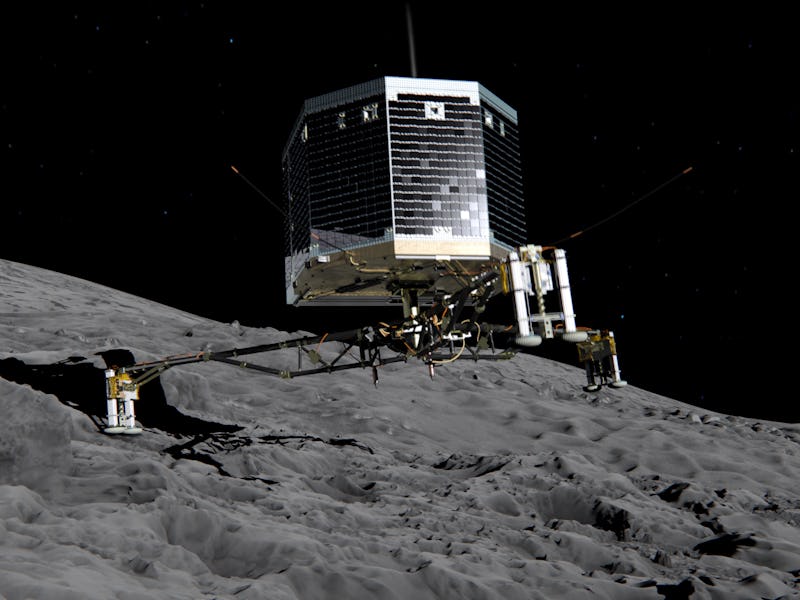With less than a month left in the Rosetta mission, the European Space Agency has finally located the final resting place of the now-defunct Philae lander. It’s a cause for celebration – and closure for Earth-bound scientists, who said their final farewells to the probe in July after a year of radio silence.
“We are so happy to have finally imaged Philae, and to see it in such amazing detail,” says Cecilia Tubiana with the Rosetta mission’s OSIRIS camera team in an ESA news release.
Philae made history in November 2014 when it landed on the comet known as 67P/Churyumov-Gerasimenko, although it wasn’t exactly a smooth ride. The probe first hit a region called Agilkia before bouncing off, spending another two hours in suspension, and finally landing on the comet’s smaller lobe, later called Abydos.
All seemed well until three days later, when the lander went into hibernation mode because its battery had been exhausted. It checked in briefly in June and July of 2015, when the comet traveled closer to the sun and solar power could be generated, but the communication was short lived.
Mission command finally pulled the plug on the probe in July.
The Rosetta spacecraft’s OSIRIS camera captured the images of the lander on September 2, and from there they were transmitted back to Earth. This solves a final mystery for Philae, and gives context to the data collected by the probe during the time it was operational.
Can you spot it? The Rosetta mission's Philae lander hides in a crevasse on Comet 67P/Churyumov-Gerasimenko's surface, where scarce sunlight hindered solar powered equipment.
“We were beginning to think that Philae would remain lost forever. It is incredible we have captured this at the final hour,” says Patrick Martin, ESA’s Rosetta mission manager, in the release.
The ESA will end its 12-year Rosetta mission in spectacular fashion on September 30 by crashing the probe into the surface of Comet 67P, allowing it to investigate the interior surface and the pits in its Ma’at region.
